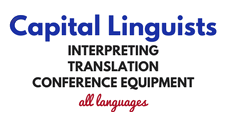Translation is not just about opening two documents, reading one and typing into the other. Nowadays, there are various tools available to help make things run smoothly throughout the process. Capital Linguists is committed to ensuring the translators we choose are suitable not only in terms of their qualifications and skills, but also the software they use. Of course, some projects can be done in Microsoft Word or a similar word-processing program, but many more are handled in specialized software
Let’s Talk About Desktop Publishing
You may have heard this term before, but what is desktop publishing, or DTP? The concept is not as unfamiliar as it first seems. If you have ever read a magazine, online restaurant menu, or brochure, chances are those documents have been created using DTP software. At its core, DTP is the creation of documents using computer software for design and page layouts. Some of the most popular programs include Adobe InDesign, Microsoft Publisher, and Canva. One of the most common uses for these tools is the creation of marketing materials, usually by a graphic designer.
How Does it Relate to Translation?
If a company is planning global expansion the likelihood is it has a product, concept, or service to sell. Therefore, it will have marking content to be translated. The translated text should be of good quality, but it’s also important that it has a similar look and feel to that of the original documents. In the past, it was common to translate in Word and Excel, then have your design team copy and paste the translations into your DTP software. This is an error-prone and tedious process, and modern technology marries translation and publishing software together. For example, LSPs will normally use a translation management system (TMS) or computer-assisted translation (CAT) software when handling your project. Our team and linguists are familiar with the top tools (like Memsource, memoQ, and SDL Trados Studio), which bring together TMS and CAT features. CAT tools are indispensable to the DTP process. This is because they can handle a wide range of file formats, including those of most publishing software. Ultimately, there is less work on your documents once they are in the target language, and they remain intact and in the correct layout. Additionally, CAT tools help ensure consistency between your files and preferred terminology, so you get a professional document every time.
